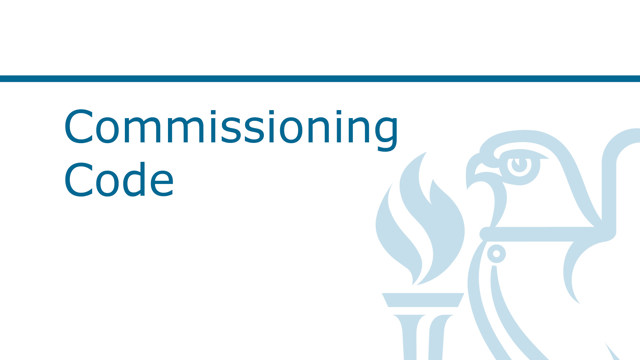
- Standard Rate
- £100.00 +VAT
- Member Rate
- FREE
Commissioning Code A: Air distribution systems aims to detail the setting to work, functional testing and regulation process for a variety of ventilation and ductwork systems.
CIBSE's Commissioning Codes set out clearly and systematically the steps required to commission building services in a proper and timely manner. They set out what is to be done, and should be read in conjunction with CIBSE Commissioning Code M: Commissioning management and alongside the BSRIA Guide BG 49 and CSA guidance that details how it should be done.
Good commissioning of buildings requires specialist skills and knowledge. It also requires input early in the life of a project, when key decisions relating to the construction process are taken. When coupled with good maintenance practice, commissioning helps to provide building occupiers with a safe, high quality, comfortable, efficient internal environment. It is also a key element in the pursuit of a reduced carbon footprint, both during the construction phase and in the ongoing future operation of buildings.
Please note that a Commissioning Code A: Air distribution systems webinar is also scheduled for 21 August 2024.
1. Introduction
2. Scope and purpose
2.1. Scope
2.2 Purpose
3. The design stage
3.1 Competency
3.2 Appointment
3.3 Specification
3.4 Planning and programme
3.5 System commissionability reviews
4. On-site stage — functional testing preparation
4.1 Objectives
4.2 Method statements and methodologies
4.3 Off-site testing
4.4 Monitoring system static inspection and testing
5. On-site stage — functional testing
5.1 Setting to work
5.2 Regulating the system
5.3 System performance testing
5.4 Demonstration and acceptance
6. The in-use stage
6.1 Review commissioning of the project
6.2 Fine-tuning and seasonal testing
6.3 Post-project review
6.4 Ongoing commissioning
6.5 Air quality and infection resilience
7. Specific system guidance
7.1 The different system types
7.2 Conventional constant volume systems
7.3 Variable air volume systems
7.4 Pressure differential systems
7.5 Specialist applications
Appendix A: Designer’s implications and requirements
A.1 Specification and information
A.2 Schematics and layout drawings
A.3 Practical considerations
A.4 Specialist products
A.5 Specialised test requirements
A.6 Witnessing
Appendix B: Installers’ duties and responsibilities
B.1 Introduction
B.2 Requirements
B.3 Cleanliness
B.4 Inspections
B.5 Ductwork leakage testing
B.6 Static completion certification
Appendix C: Instruments and calibration
C.1 Introduction
C.2 Instrument calibration
C.3 Comparing different measurement methods
Appendix D: Indoor air quality/infection resilience
D.1 Resisting infection
D.2 Infection resilience
Appendix E: Shell and core/fit-outs
E.1 Shell and core
E.2 Fit-outs
Author: Keith Barker (Tectonic Techniques Ltd)
Steering Group: Ted Pilbeam (VolkerFitzpatrick) (Chair), Tony Anderson (CSA) (Deputy Chair), Patrick Barry (Banyards), David Bleicher (BSRIA), Tom Bradbury (HDR), James Campbell (TB+A), Barrie Daniel (Arup), Phil Draper (Twenty One Engineering), Mick Holland (Fellowes), Chris Iddon (independent consultant), Conor Logan (Colt International Ltd), Paul McSoley (Mace Group), Adam Muggleton (AESG), Neil Smith (VolkerFitzpatrick)
Peer reviewers: Roger J Carlin (Ashford Environmental Services Limited), David Green (CIBSE, ASHRAE)